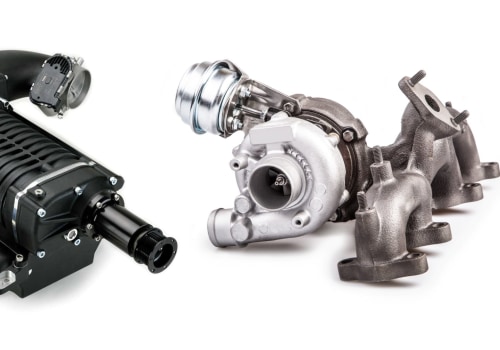High speed cornering is an essential skill for any serious racing driver. It requires precision and confidence to navigate tight turns and curves at high speeds. But with the right techniques, even novice drivers can master this technique. In this article, we'll explore some of the most effective high speed cornering techniques and how to use them to become a better racer.
From proper body positioning and braking technique to understanding the importance of the correct line, these tips will help you become a confident driver on the track. So let's get started!The first thing to understand about cornering is that it is all about managing momentum. The faster you go into a corner, the more momentum you will have, which can make it difficult to control the car. It is important to understand when to brake, how hard to brake, and when to accelerate, as these will determine how quickly you can get through a corner without sacrificing speed or control.
Additionally, it is important to know which type of corner you are approaching so that you can adjust your driving accordingly. Straight corners require different driving techniques than hairpin or chicane corners. Straight corners involve less turning and more acceleration and braking. Hairpin corners require more turning and less acceleration or braking.
Chicane corners require a combination of both techniques.
Body position
is critical for cornering as it allows you to shift your weight from side to side in order to maintain control over the car. Additionally, body position can help you keep the car on the racing line, which is the fastest way through any corner. Finally, understanding your car's limits is essential for successful high speed cornering. Knowing how fast your car can safely go around a corner and when it begins to lose grip or become unstable can help you adjust your driving accordingly and make sure that you are not pushing too hard and risking an accident.Body Positioning
Body positioning is an important part of successful high speed cornering. Being aware of how your body is positioned in relation to the car can help you shift your weight in order to keep the car on the racing line.Proper body positioning involves sitting in an upright position, keeping your arms and legs bent, and keeping your head forward with your eyes focused on the track ahead. When cornering at high speeds, it is important to keep your body as low as possible to reduce drag. This will help ensure that the car remains stable and won’t be affected by sudden gusts of wind. Keeping your elbows tucked in will also help you balance the car, as well as provide a more direct connection with the steering wheel. Additionally, it is important to keep your weight centered over the car's frame. This will help you maintain balance and traction while cornering.
Moving your weight too far to either side can cause the car to become unbalanced, resulting in a loss of speed and control. Finally, it is important to keep your feet firmly planted on the pedals at all times. This will ensure that you have complete control over the vehicle, allowing you to make quick corrections if necessary.
Knowing Your Car's Limits
Understanding your car's capabilities and limits is an essential part of high speed cornering. Knowing when your car begins to lose grip or become unstable can help you make adjustments in order to stay safe.It is important to be familiar with your car's handling characteristics and how they change as the speed increases. A good understanding of the traction, balance, and stability of your car will help you feel out the limits of its performance and adjust your driving accordingly. It is also important to know the effect of different weather conditions on the grip of your car. It is also important to make sure that your car is in good condition before you attempt any high speed cornering. Make sure that the tires are properly inflated and that the brakes are working properly.
Checking for excessive wear and tear on the suspension components is also important. Finally, it is important to practice cornering at high speeds in a safe environment. Try to find a track or course where you can practice and gain confidence in your abilities. This will help you understand how your car behaves at higher speeds and will help you better understand its limits.
Acceleration Techniques
Acceleration is key for exiting a corner successfully. Understanding when and how hard to accelerate is essential for maintaining control over your car and ensuring that you don't lose momentum.Accelerating correctly requires an understanding of the types of corners you may encounter, the physics of turning, and the best techniques to use when accelerating. When approaching a corner, it is important to know when and how hard to accelerate. Accelerating too early can cause the car to become unstable and even spin out. On the other hand, accelerating too late can cause you to lose momentum.
Therefore, it is important to understand the physics of cornering, the type of corner you are approaching, and the best techniques for accelerating. One technique used for accelerating around a corner is called 'heel-toe shifting'. This involves quickly shifting your foot from the gas pedal to the brake pedal while turning, allowing you to maintain control over the car while still applying power. This technique requires practice and is best learned from experienced drivers. Another technique is called 'trail braking'.
This involves braking while turning and then slowly releasing the brake as you approach the apex of the corner. This technique helps to maintain control over the car while providing additional grip due to increased weight transfer. Again, this technique requires practice and can be dangerous if done incorrectly. Finally, it is important to remember that accelerating too early or too late can cause you to lose momentum and put you at risk of spinning out. Therefore, it is important to know when and how hard to accelerate around a corner in order to safely exit a corner successfully.
Braking Techniques
Knowing when and how hard to brake is an essential part of high speed cornering.Braking too early or too hard can cause the car to lose control and skid off course. It is important to know your car's capabilities so that you can brake in a way that is safe and effective. When cornering at high speeds, it is important to brake in a controlled manner. This means that the brake pressure should be applied gradually, giving the car time to slow down without losing its grip. It is also important to apply the brakes at the right time – braking too early will cause the car to understeer, while braking too late can cause it to oversteer.
When approaching a corner, it is important to brake early enough so that the car has slowed down enough to enter the corner in a controlled manner. This means that the car should enter the corner with enough speed to keep it turning at the same rate, without having to over- or under-steer. Once the car has entered the corner, it is important to apply the brakes smoothly and evenly. The brakes should be used as little as possible during the turn – any sudden changes in speed can cause the car to lose grip and spin out.
When exiting the corner, it is important to accelerate in a controlled manner, allowing the car’s weight to be transferred back onto the rear wheels for increased traction. The key to successful high speed cornering is to understand your car's capabilities and learn how to brake effectively. With practice, you will be able to corner safely and efficiently, without sacrificing speed or control.
Knowing Your Car's Limits
Understanding your car's capabilities and limits is an essential part of high speed cornering. Knowing when your car begins to lose grip or become unstable can help you make adjustments in order to stay safe. When approaching a high speed corner, it is important to be aware of the car’s maximum cornering potential. This means understanding what kind of cornering speeds your car can safely handle, as well as how quickly it can respond to steering input.Many cars have specific ratings for cornering and it is important to stay within those limits. Additionally, you should always be aware of any track conditions that could affect your car’s performance such as wet or icy surfaces. It is also important to pay attention to the behavior of the car when cornering. If you feel it beginning to slide or become unstable, you should reduce your speed and make sure you have enough space to make corrections if necessary. Learning how to identify and adjust for these changes in driving conditions can help you get the most out of your cornering experience.
Knowing Your Car's Limits
Understanding your car's capabilities and limits is an essential part of high speed cornering.Knowing when your car begins to lose grip or become unstable can help you make adjustments in order to stay safe. Different cars have different limits, so it's important to be aware of how your car behaves when it's pushed to the limit. When cornering at high speeds, look for signs that your car is about to reach its limit such as excessive tire squeal, loss of traction, and understeer or oversteer. Adjusting your speed or line accordingly can help you stay safe. High speed cornering requires skill, practice, and understanding of the basics of cornering.
Braking techniques, acceleration techniques, body positioning, and knowing your car's limits are all essential for successful cornering. When cornering at high speeds, it is important to brake and accelerate with precision and control in order to maintain control over your car. Additionally, understanding your car's limits and the proper body positioning for a given corner are key to getting the most out of your cornering experience.







